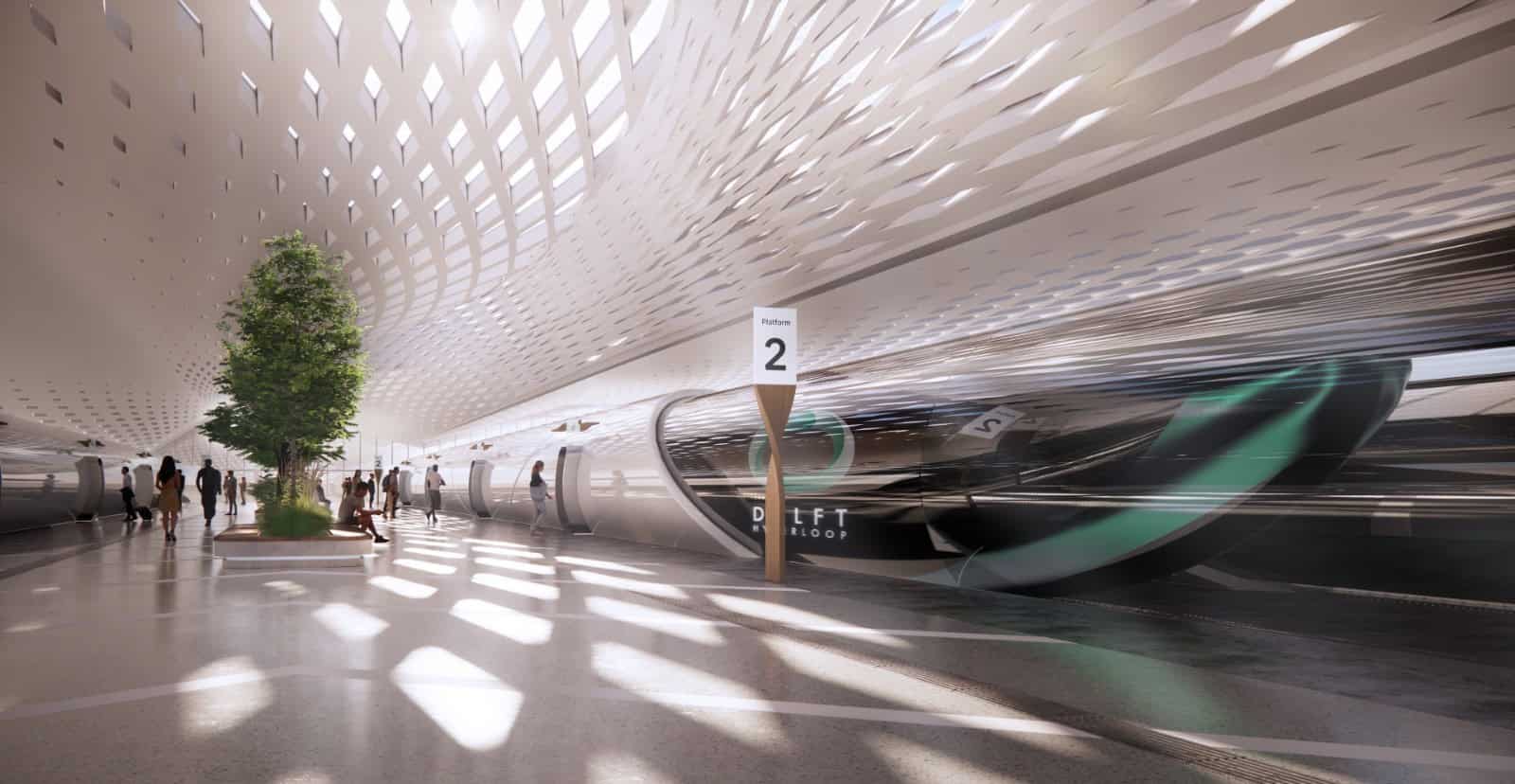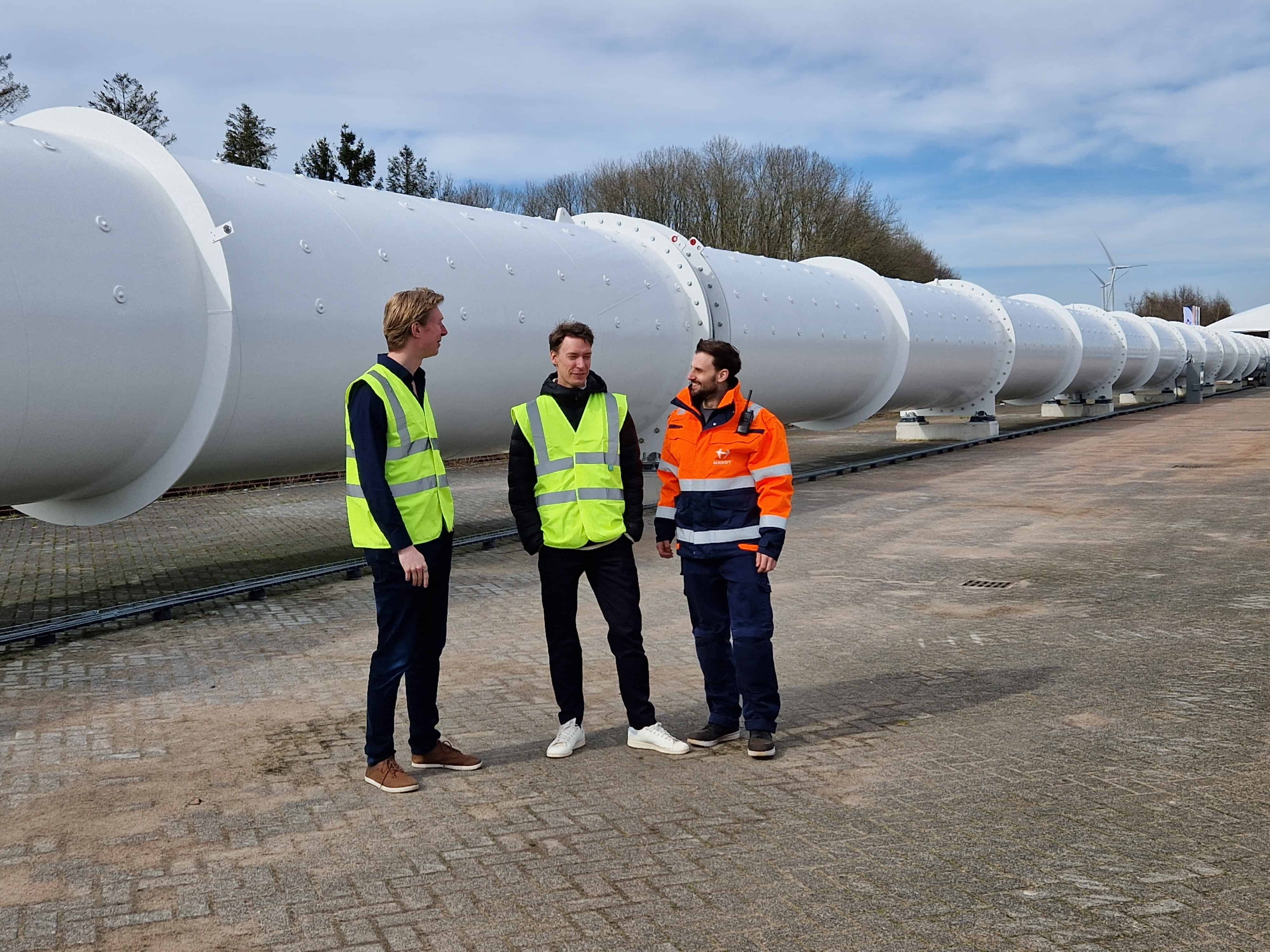
TU Delft students have successfully performed a trajectory change with the Hyperloop. Previously, this was not possible. This vacuum train, which can reach speeds of up to 1,000 kilometers per hour, is intended as a sustainable alternative to short European flights.
Why this is important:
The Hyperloop promises to be a sustainable alternative for long-distance travel.
Students have built a 42-meter-long test track on the Delft campus. In this steel structure floats their small, unmanned version of the Hyperloop, which they believe is a promising means of transportation for traveling long distances quickly in the future. Recently, they tested their track-switching system here.
Vacuum tubes
Hyperloops float by using electromagnetism in vacuum tubes. The capsules do not touch the tubes, and in the artificial vacuum there is virtually no air resistance. This allows the “vacuum train” to reach very high speeds with relatively little energy. The Delft students’ test model does not achieve such high speeds, but they believe the new technique they demonstrated on a small scale could be useful for developing real passenger hyperloops.

European cities
The Hyperloop is designed for long distances, such as those between European cities. This requires special stations and a network of hundreds of kilometers of vacuum tubes. Once this network is realized, the student team expects the Hyperloop will allow you to travel from Amsterdam to Paris in half an hour.

